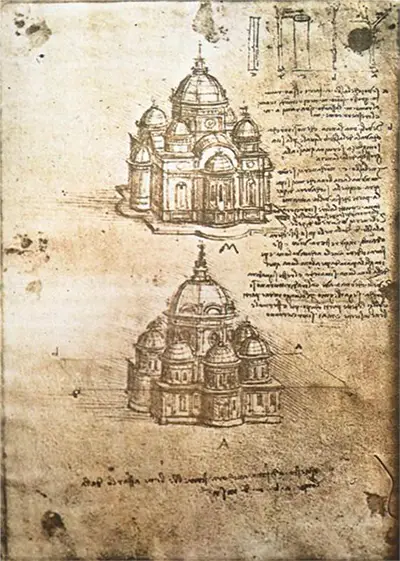This double-sided artwork has two highly detailed sketches on the front, with two overhead views on the back. There are also several texts which provide additional notes to the intentions of the great master.
There are obvious similarities with many other works that he produced in this series, all of which are listed in the architectural drawings section. The main challenge for this design is capturing the larger dome and supporting elements which surround it accurately. Curved architectural drawings require considerable practice in order to look correct, but there were also practical considerations that Da Vinci would have to cover too.
There was so much to appreciate from the artist's work within this discipline, even though his achievements are not placed at the same level as his paintings, portrait drawings and inventions.
Whilst devoting many months in designing this particular project, the artist would also go on to address all manner of other challenges within his medium of pen and ink on paper. He would plan whole cities as well as a variety of individual elements of them, such as routes of traffic and canals, large sculptures and gardens and more.
It is the combination of artistic skills and engineering mind that helped this artist to become such a respected figure in the Renaissance. Few, if any, others have provided such impressive contributions to the fields of art, science and maths as this one.
